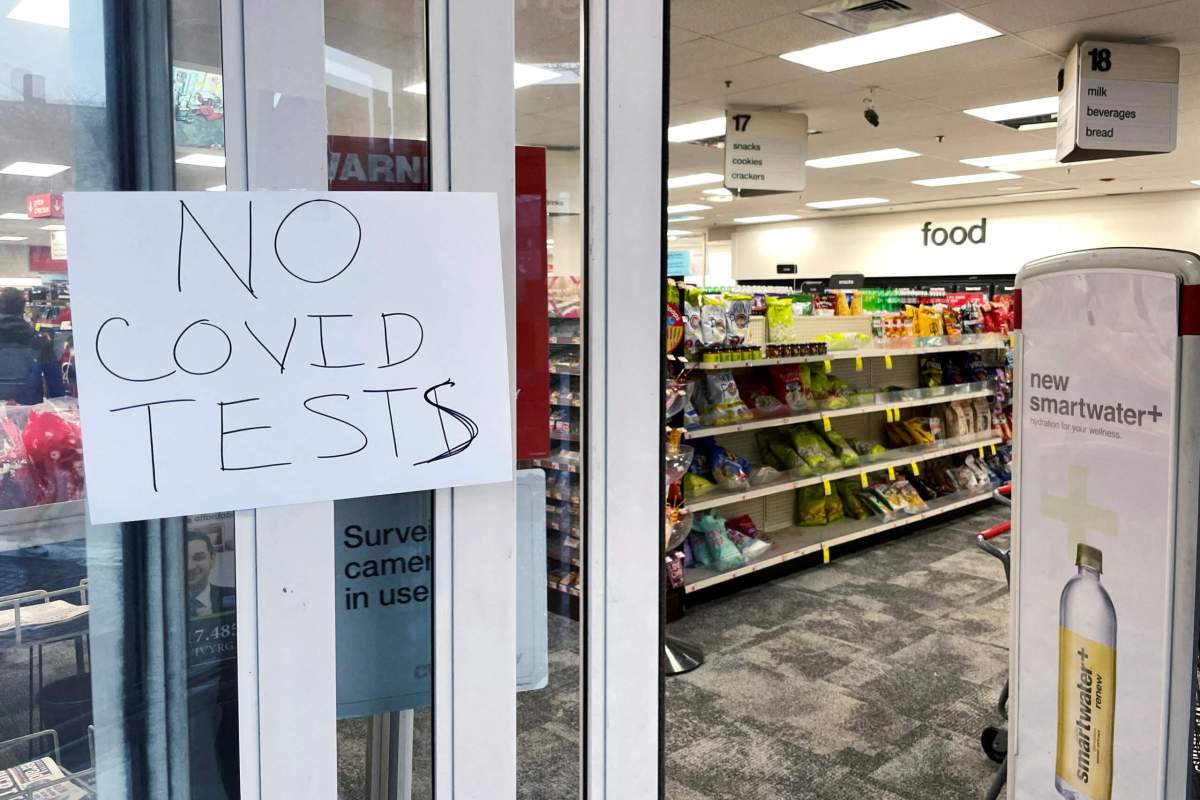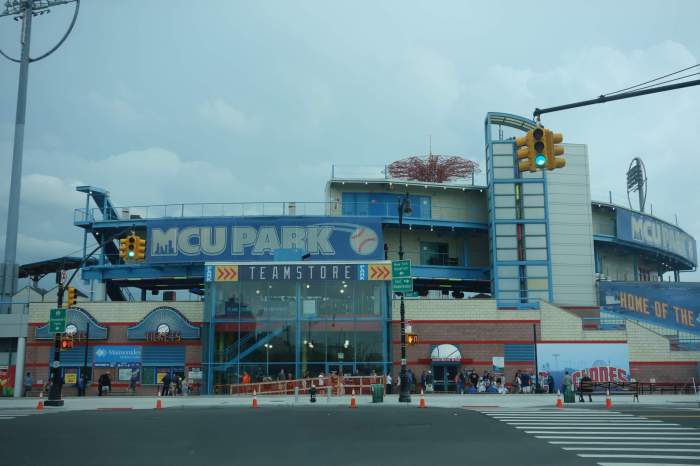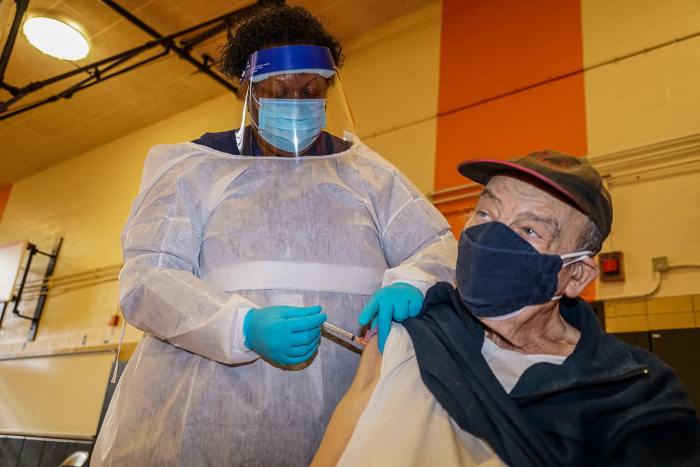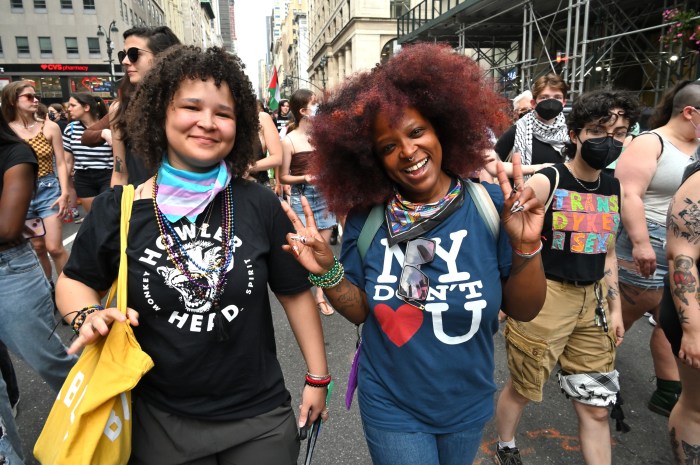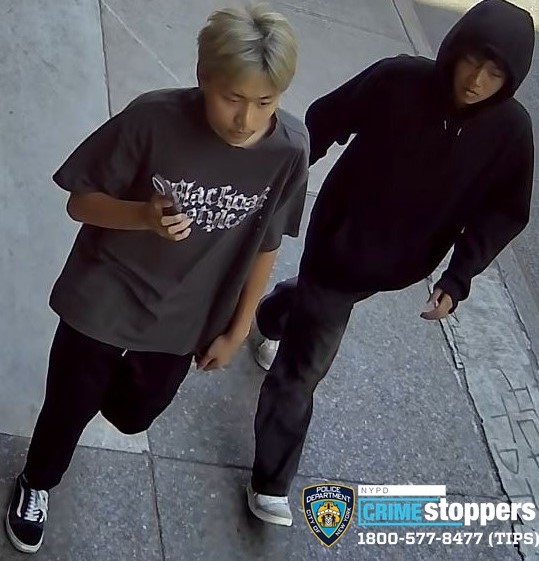The Omicron variant is still rampaging throughout the borough, but the once-long lines for COVID-19 tests have disappeared, allowing Brooklynites to easily access both PCR nasal swabs and rapid throat tests.
The highly-transmissible variant, which has sent case numbers, positivity rates, and hospitalizations to levels not seen since the pandemic’s terrifying earliest days, appears to be waning.
Cases in the Big Apple appear to have peaked earlier this month, according to city and state data, though both show the peak occurring on different days.
Brooklyn’s peak came either on Jan. 1, when 22.6 percent of tests came back positive, or on Jan. 6, when 13,063 people tested positive, according to state data.
On Jan. 15, the latest day with available data, Brooklyn had 8,568 positive cases. The positivity rate in Brooklyn over the past seven days has gone from 20.69 percent on Jan. 6 to 13.9 percent on Jan. 15, per state data.
Gov. Kathy Hochul said Friday that the state appears to be “turning a corner,” with cases statewide down to about 49,000 from a high of 90,000 a week ago.
“That is a very positive trend and I believe we’ll be able to keep that going,” the governor said.
Still, cases remain higher than they’ve been in any previous wave of the pandemic. But the long lines for COVID tests that dominated headlines through the December holidays are now a thing of the past.
No brick-and-mortar testing site run by the city’s public hospital network, NYC Health + Hospitals, has a line longer than 30 minutes at present, according to H+H’s wait time dashboard; most have no line at all, and test-seekers can just walk right in. That stands in stark contrast to just a few weeks ago when New Yorkers looking to get tested almost anywhere had to brave hours-long lines.
When Brooklyn Paper visited Kings County Hospital on Tuesday, the line was non-existent; people could walk right in, and this reporter was in-and-out in minutes. On Dec. 20, though, the line was hundreds deep, hours-long, and snaked around several corners. That day, 4,379 Brooklynites tested positive and 10.1 percent of tests were positive, both significantly lower than Tuesday’s 8,623 positives and 14.3 percent positivity rate.
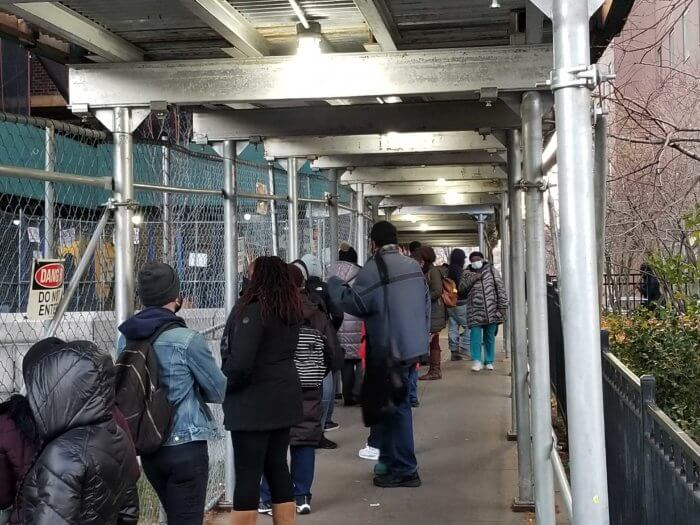
In Brooklyn, about 76,978 people got tested on Jan. 14, compared to 66,000 on Jan. 7 and nearly 76,000 on Christmas Eve. Those numbers have fluctuated in the interim, though, rather than following a straight line.
Test & Trace Corps, the wing of H+H that runs the city’s testing program, credits massively scaling up testing capacity as Omicron drove a huge increase in demand as the reason why lines are no longer so arduous: with 250 sites, double what it was last month, the demand is now more spread out, said Test & Trace spokesperson Adam Shrier.
“There is more testing available in New York City than ever before. The omicron variant required our testing teams to mobilize a response with unprecedented speed and scope — and that’s exactly what we delivered,” Shrier said. “We are committed to doing everything we can to make testing fast and accessible for all New Yorkers.”
The scale-up, which has taken place across two mayoral administrations, came after the city, pre-Omicron, closed down dozens of brick-and-mortar sites as it sought to pivot its testing strategy to mobile sites. The city was forced to effectively reverse that action as Omicron reared its head.
H+H sites have accounted for a quarter of all tests performed in the city since December, and that month saw a 79 percent surge in demand over pre-Omicron November, Shrier said.
Private sites also saw massive increases in demand that have now dissipated: @CityMDline, a Twitter account tracking testing site lines, has lately been posting pictures all over Brooklyn of scant lines at private sites.
Shrier also noted that increased demand for testing was already expected over the holidays anyway, as many New Yorkers sought a negative test in order to see family. The holidays are now over, so demand has decreased accordingly.
Another reason demand has decreased so substantially, despite the continuing winter surge, is the increasing availability of at-home rapid tests. Three weeks ago, at-home tests were a precious commodity, flying off store shelves even whilst undergoing flagrant price gouging, and city distributions of free at-home tests were mobbed by hundreds of people attempting to get one.
At-home tests are easier to get now as supply has ramped up to meet demand, and as the government has started distributing them in bulk — Hochul noted Friday that the state had secured a whopping 64 million at-home tests, which have been distributed in schools, nursing homes, and other congregate settings. On the open market, however, the tests are still subject to price gouging.


